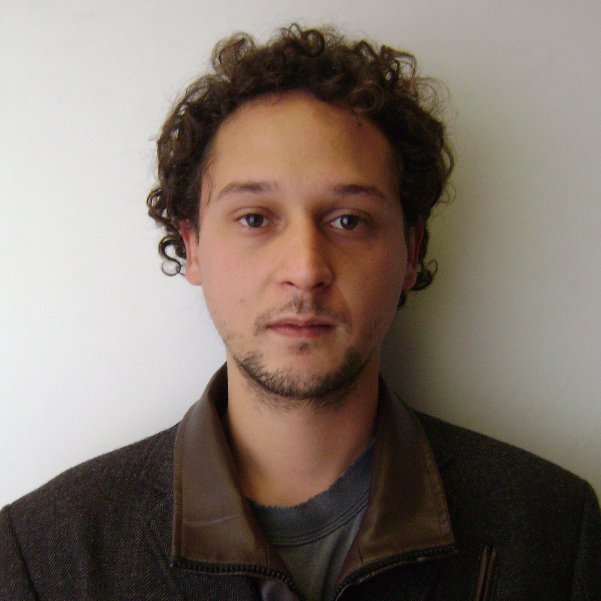Dec 16, 2020
Ookinete purification by centrifugation
- 1Instituto de Biotecnología - Universidad Nacional Autónoma de México;
- 2Centro de Investigaciones sobe Enfermedades Infecciosas - Instituto Nacional de Salud Pública

Protocol Citation: Benito Recio Totoro 2020. Ookinete purification by centrifugation. protocols.io https://dx.doi.org/10.17504/protocols.io.bmrmk546
Manuscript citation:
Recio-Tótoro B, Condé R, Claudio-Piedras F, Lanz-Mendoza H. Affinity purification of Plasmodium ookinetes from in vitro cultures using extracellular matrix gel. Parasitol Int. 2020 Nov 3;80:102242. doi: 10.1016/j.parint.2020.102242. Epub ahead of print. PMID: 33152548.
License: This is an open access protocol distributed under the terms of the Creative Commons Attribution License, which permits unrestricted use, distribution, and reproduction in any medium, provided the original author and source are credited
Protocol status: Working
We use this protocol and it's working
Created: September 26, 2020
Last Modified: December 16, 2020
Protocol Integer ID: 42509
Keywords: Plasmodium, ookinete, purification
Disclaimer
This protocol involves working with mouse blood.
Abstract
The ookinetes, as they come from the ookinete culture, are suspended in a solution that also contains blood cells and other parasite stages. Often, it is necessary to purify the ookinetes from these other cell types. This is achieved exploiting biological, chemical, and physical properties of the ookinetes that differ from the other cell types present in the ookinete culture.
This protocol first exploits the ookinete's biological property of laking a Cl-/HCO3- channel in the membrane. On the contrary, the red blood cells (RBC) do have this channel. Because of this, RBC can be selectively lysed using an isotonic solution of NH4Cl. In solution NH4Cl dissociates into NH4+ and Cl-, the NH4+ then transforms into NH3, which is permeable to the plasma membrane in contrast to the NH4+. Once inside the cell, NH3 establishes an equilibrium with NH4+ resulting in a net influx of Cl- through the aforementioned ion channel, increasing the NH4Cl concentration in the RBC considerably and, therefore, of water, causing an osmotic shock and RBC burst. Since HCO3- is in equilibrium with CO2, RBC lysis must be performed during shaking to increase the concentration of CO2 in the solution (Chernyshev, et al., 2007).
Next a series of differential centrifugations are performed exploiting the sedimentation rate of the ookinetes, which depends on the size, shape, and density of the ookinetes as well as on the viscosity of the medium. The last step involves isopycnic centrifugation in a density cushion taking advantage of the buoyant density of the ookinetes.
This method has been modified from Rodríguez M.C., et al., 2002 and Carter V., et al., 2003.
CITATION
CITATION
CITATION
Before start
Materials and equipment:
1.- 15 and 50 ml conical-bottom centrifuge tubes.
2.- Centrifuge, preferably with a swinging rotor and refrigerated to 20°C.
3.- 1 ml pipette and tips.
4.- Transfer pipettes, Pasteur pipettes, or the like to remove the supernatant.
5.- Orbital shaker.
6.- 500 ml sterile Erlenmeyer flask.
Reagents.
1.- Phosphate buffered saline (PBS).
2.- Ammonium chloride (NH4Cl) at 0.17 M.
3.- Nycodenz (Iohexol or Hiztodenz) at 27.6% in Nycodenz buffer.
4.- Nycodenz buffer (4.95 mM Tris, 0.417 mM EDTA, and 2.95 mM KCl at pH 7.5).
Take the ookinete culture form the incubator and mix well to re-suspend the sedimented cells.
Transfer to a 50 ml conical-bottom tube and 1500 rcf, 20°C, 00:03:00
Remove supernatant and add NH4Cl at a ratio of 1:40 in relation to the volume of the pellet.
Transfer the solution into a 500 ml Erlenmeyer flask.
Note
First, add 1 or 2 ml of NH4Cl and pipette up and down vigorously to disaggregate the pellet. Then add the rest of the solution (about 40 ml in total).
100 rpm, 20°C, 00:25:00
Transfer the solution into a 50 ml conical-bottom tube and 725 rcf, 20°C, 00:03:00 .
Remove the supernatant and add 2 mL of PBS.
Pipette vigorously to disaggregate the pellet.
Then add 40 mL of PBS.
500 rcf, 20°C, 00:03:00
Note
Ookinetes are very sticky and in the absence of a substrate tend to form clumps that greatly reduce the outcome of the purification.
It is important to pipette thoroughly and to add only one ookinete culture per centrifuge tube.
Repeat step 4 but with the following centrifuge conditions: 270 rcf, 20°C, 00:05:00 .
Remove supernatant, add 2 mL of PBS, and pipette vigorously.
Prepare 5 mL of Nycodenz at 17% with iohexol buffer in a 15 ml conical-bottom tube and slowly add the 2 mL of ookinetes-PBS on the iohexol cushion.
Avoid mixing the two solutions.
895 rcf, 20°C, 00:15:00
Remove the brownish interphase between the PBS and the iohexol that contains the purified ookinetes.
Transfer the interphase to a 15 ml conical-bottom and add 10 mL of PBS.
270 rcf, 20°C, 00:05:00 to remove the Nycodenz. Repeat two times.
Citations
Chernyshev A.V., Tarasov P.A., Semianov K.A., Nekrasov V.M., Hoekstra A.G., and Maltsev V.P.. Erythrocyte Lysis in Isotonic Solution of Ammonium Chloride: Theoretical Modeling and Experimental Verification.
http://dx.doi.org/10.1016/j.jtbi.2007.10.016.Rodríguez M.C., Margos G., Compton H., Ku M., Lanz H., Rodriguez M.H., and Sinden R.E.. Plasmodium berghei: Routine Production of Pure Gametocytes, Extracellular Gametes, Zygotes, and Ookinetes
https://doi.org/10.1016/S0014-4894(02)00035-8Carter V, Cable HC, Underhill BA, Williams J, Hurd H. Isolation of Plasmodium berghei ookinetes in culture using Nycodenz density gradient columns and magnetic isolation.
